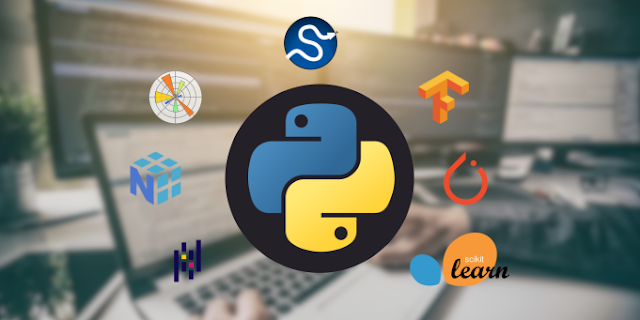Top Python Libraries for Data Science and AI Development
If you're diving into the world of data science and AI, Python is your best companion. Its rich ecosystem of libraries makes it the preferred programming language for professionals and beginners alike. Whether you're working on machine learning models, data visualization, or deep learning, Python has a tool for you. In this blog, you'll discover the top Python libraries that will help you build powerful AI and data science solutions.
Looking to advance your career in data science? Consider enrolling in a data science course training in Thane to gain hands-on experience with these libraries.
1. NumPy – The Foundation of Scientific Computing
NumPy (Numerical Python) is one of the most fundamental libraries for scientific computing in Python. It provides support for large, multi-dimensional arrays and matrices, along with a vast collection of mathematical functions to operate on these arrays.
Why Use NumPy?
Faster and more efficient computation than Python lists
Provides powerful N-dimensional array objects
Supports linear algebra, random number generation, and Fourier transforms
If you're working with datasets, NumPy is the backbone for numerical operations, making it essential for data science and AI development.
2. Pandas – Data Manipulation Made Easy
Pandas is the go-to library for data manipulation and analysis. It provides data structures like Series and DataFrame, making it easy to handle structured data efficiently.
Why Use Pandas?
Read and write data from various formats (CSV, Excel, SQL, JSON)
Perform data cleaning and preprocessing
Easy handling of missing data and filtering operations
If you're planning to work with real-world data, mastering Pandas is crucial. You can gain practical exposure through a data science course training in Thane, best institute for data science with placement in Thane and become proficient in data analysis.
3. Matplotlib and Seaborn – Data Visualization at Its Best
Visualization is a key aspect of data science, and Matplotlib and Seaborn are the most widely used libraries for this purpose.
Matplotlib
Matplotlib allows you to create static, interactive, and animated visualizations in Python. It is highly customizable and supports a wide range of plots.
Seaborn
Seaborn is built on top of Matplotlib and is specifically designed for statistical data visualization. It offers attractive themes and functions to simplify complex visualizations.
Why Use These Libraries?
Generate bar charts, histograms, scatter plots, and more
Customize graphs with labels, legends, and colors
Identify patterns and trends in data
4. Scikit-Learn – The Machine Learning Powerhouse
Scikit-Learn is a robust machine learning library that provides simple yet powerful tools for predictive modeling.
Why Use Scikit-Learn?
Includes algorithms for classification, regression, and clustering
Features tools for model selection and validation
Supports feature extraction and data preprocessing
If you're looking to apply machine learning techniques in real-world scenarios, this library is a must-learn.
5. TensorFlow and PyTorch – Deep Learning Giants
Deep learning has revolutionized AI, and TensorFlow and PyTorch are the leading frameworks in this field.
TensorFlow
Developed by Google, TensorFlow is a popular deep-learning framework used for training and deploying machine learning models at scale.
PyTorch
Developed by Facebook, PyTorch is widely used in research due to its dynamic computation graph and easy debugging features.
Why Use These Libraries?
Build neural networks for image and speech recognition
Train AI models on large datasets
Deploy deep learning applications across platforms
If you want to specialize in AI and deep learning, these libraries are indispensable.
Conclusion
Python offers a diverse range of libraries that make data science and AI development easier, more efficient, and highly scalable. Whether you're starting with NumPy and Pandas or diving deep into TensorFlow and PyTorch, mastering these tools will elevate your career prospects.
If you're ready to enhance your skills, check out the best institute for data science with placement in Thane and start your journey toward becoming a data science expert.
Which of these Python libraries do you find the most useful? Let us know in the comments below!




Comments
Post a Comment